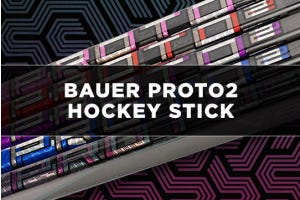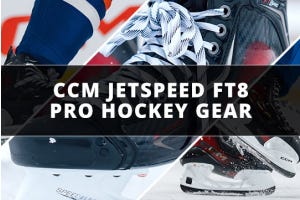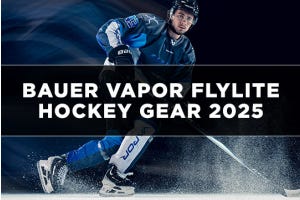Youth Hockey Equipment Buying Guide: Parents Hockey Gear Checklist
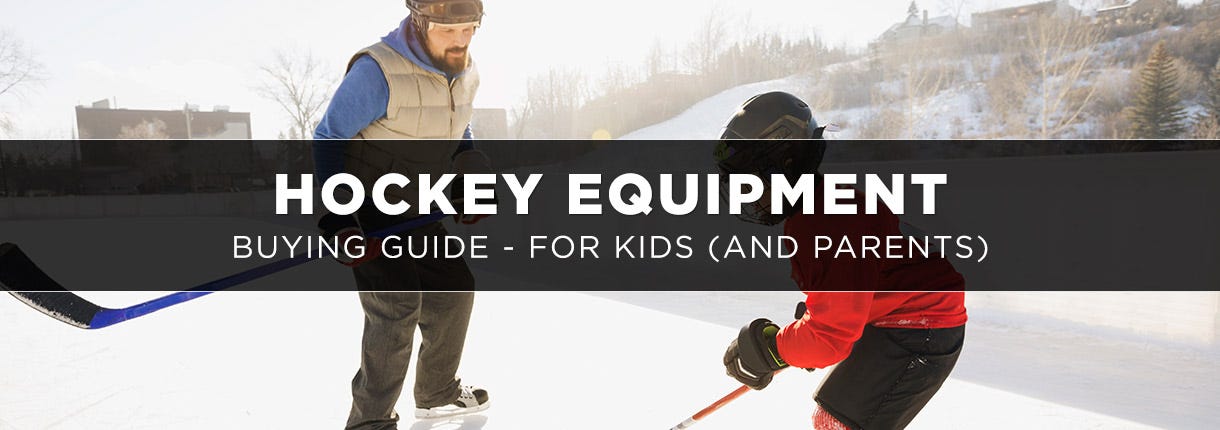
With emerging NHL stars from uncommon states, like Auston Matthews from California, or Matthew Tkachuk from Arizona, ice hockey has caught the attention of a substantial number of new fans. This is likely a contributing factor as to why, in the United States alone, ice hockey had more than 1.15 million participants last year. This number is up over 2% from the year prior, with many being completely new to the sport. If your child has developed an interest in the game of ice hockey, this guide will be helpful for parents on how to get started!
As a parent, shopping for youth hockey equipment for your child can be a daunting and overwhelming task. It is hard to remember what gear is required, what gear is recommended, and what purpose each piece of gear serves. This article will serve as your “one-stop shop” for that information, as well as standard price ranges and answers to frequently asked questions regarding youth hockey equipment!
Youth Hockey Equipment Guide
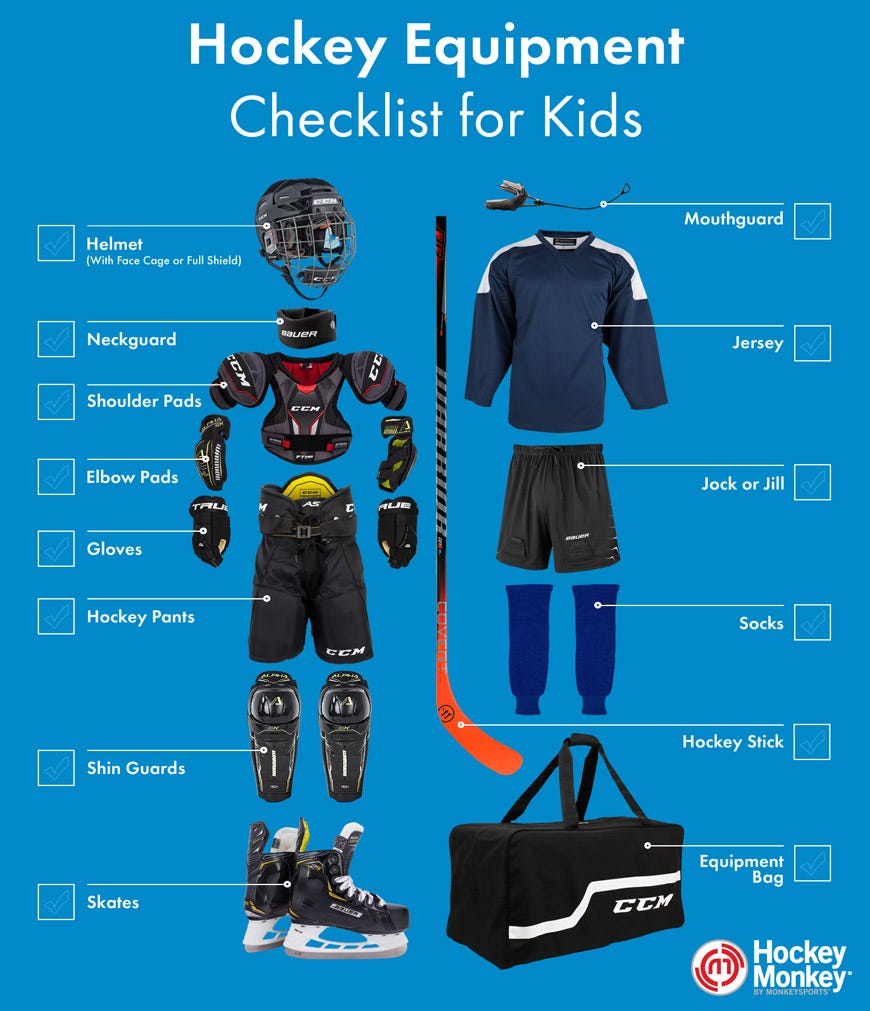
Download this checklist as a PDF
Youth Hockey Equipment List
- Helmet
- Neck Guard
- Mouth guard
- Shoulder pads
- Elbow pads
- Jersey
- Jock or Jill
- Shin guards
- Hockey socks
- Hockey pants
- Skates
- Gloves
- Hockey stick
- Hockey bag
Breakdown of Hockey Gear
The list above is a standard youth hockey equipment guide. No matter what youth league your child plays in, they will need each piece of equipment shown in the photo above. This ensures that they will be as safe as possible while on the ice, as this equipment protects your child from falls, errant sticks, and so on.
Starting from the top, the helmet is essential to any hockey player, regardless of age. The helmet protects one’s head against sticks, pucks, and hits from other players. All helmets come with a HECC sticker located on the back that ensures that the helmet is not expired and is designed by the manufacturer with no modifications. Another piece of equipment that is required for youth hockey players, and is recommended to players of all ages, is a mouthguard. This will help protect your child’s teeth and jaw upon impact, but more importantly, will help reduce the risk of head and brain injuries. The neck guard has a similar function to these two pieces of equipment. While the neck guard becomes optional after high school hockey, anything prior to that age requires one. Neck guards help protect against any sort of cuts that can potentially happen during gameplay. They also help protect players from the impact of items like an errant stick or helmet.
Moving down to the torso and arms, your child will need two key pieces of gear: a set of shoulder pads and a set of elbow pads. Shoulder pads are important for a variety of reasons. As your child ages, they will move through the ranks of youth hockey until they reach the age where hitting becomes a routine part of the game. A sturdy set of shoulder pads will greatly benefit them when that time comes. They will also protect your child against a multitude of other things, such as sticks and pucks from deflections or shots. Elbow pads are essential, too. They protect mostly against sticks, as they can sometimes get hooked around the arms. They can also be very helpful when falling. When young players fall, it is typical for them to want to break their fall using their elbows. Because of this, having a well-made set of elbow pads will be very beneficial. This gear can be covered by a jersey, which will help keep everything fastened.
Hockey gloves are also imperative for any hockey player, as they have a multitude of benefits. They give the player great protection against stick checks from other players, protection against the puck from shots, and protection from contact against the boards.
Next, one of the most important pieces of equipment is the jock. On all compression-style jocks, there is an interior compartment where a cup goes, which is essential, as it protects against all types of contact. They also hold up the player’s socks, thanks to the Velcro tabs. Simply attach their tab to the tabs that are on the insides of all modern mesh socks and they should be good to go!
Moving on to leg protection, every hockey player will want a set of shin guards. Shin guards will help protect your child’s lower legs and knees against shots and falls. You will also want to provide your child with a pair of hockey socks to cover the shin guards. It is recommended that they wear mesh socks over knit socks, as they are more breathable, more cut-resistant, and have Velcro tabs at the top that attach to the Velcro tabs on the jock. Accompanied by the shin guards are the hockey pants. Hockey pants are essentially extra padded “shorts” that fully protect a player’s thighs against stick checks and shots. Hockey pants will also protect the lower back from extra stick whacks. It is important to get your child a properly fitted pair of pants to ensure that they are not sagging down or too small, which would leave the bottom of the thigh exposed.
Hockey Skates
Skates are a vital piece of youth hockey equipment and can affect the way younger kids develop their game of ice hockey. An improperly fitting pair of skates can be uncomfortable and may make kids not want to get out on the ice. When choosing a pair of skates, it is important to make sure that they are the right size, the right fit for their foot shape, and made of high-quality materials. The best starting point would be to head over to your local MonkeySports store and get your child’s feet scanned on the Bauer 3D Foot Scanner. This scanner will be able to provide the recommended skate size and model based on your child’s foot size and shape. If purchasing new skates, you will also want to make sure they get baked properly, which a hockey specialist can help you out with at any MonkeySports store. HockeyMonkey.com has a vast array of youth hockey skates to choose from, which can be found here: Youth Hockey Skates.
Hockey Stick
Another piece of hockey equipment that is crucial for the development of youth hockey players is the hockey stick. When choosing a hockey stick, there are two main factors to keep in mind: the flex of the stick and the height of the stick. If your child selects a stick that has too high of a flex number, they will have a tough time flexing their stick during shots, thus negatively affecting their shot power. If your child gets a stick that is too short or too long, it can negatively affect their hockey stance. When it comes to flex, the general rule of thumb is to divide your child’s weight in half and that number would be the flex that you should start with. For example, if your child is 80 pounds, he or she will want to start with a 40 flex stick. The TRUE Hockey UFLEX line, which can be found on HockeyMonkey.com, has created a set of youth sticks with four different flex ratings and heights, which will help maximize player performance as the child grows. Regarding stick length, the common length is to have the stick come right up to the players chin. This allows your child to have the best control of the stick during stick handing, shooting, and defense. HockeyMonkey.com has a number of youth hockey sticks, which can be viewed here: Youth Hockey Sticks.

All hockey gear, except for the hockey stick, can be stored inside of a hockey bag. Hockey bags come in two different styles: wheeled and carry. Wheeled hockey bags are popular among younger kids, as most at that age are not able to carry a heavy bag filled with equipment. Some bags have inner compartments, while others do not. These compartments help organize each piece of gear into its own section of the bag. It all comes down to personal preference and to which style works best for your child.
Recommended Accessories
Everything listed above are the essentials for the game of ice hockey. While players can get away with just those items, there are a few items that we highly recommend to ensure the longevity of their equipment. First are skate guards or blade soakers. These are essentially a cloth “sleeve” that go over each blade, and they have two main functions. They help protect the skate’s blades against any potential nicks while in the hockey bag, and they also help dry the blades of any water to help prevent corrosion.
The next accessory we recommend is clear sock tape. This tape is different than the regular cloth tape that is commonly used on sticks. Clear sock tape is flexible and water resistant. A single strip can be wrapped around the shin guards and socks, just below the knee, which will help to keep everything in place and ensure that no equipment hinders skating ability.
Lastly, and probably the most important, is either a gear drying rack or a bottle of CaptOdor gear spray. While it is always recommended that players take the gear out of their bag after a skating session to let it air dry, a gear drying rack gives them a place to put it after doing so! Rather than taking up a lot of space with gear all over the place, drying racks keep gear organized in a small area. They are lightweight, portable, compact, and take under 30 seconds to set the up! Another route one can take is to get a bottle of CaptOdor spray. Remove your child’s gear from the bag after skating and use 1-2 sprays on each piece of gear. Make sure to spray inside gloves and skates and on the interior of shin guards and shoulder pads. Then, simply let the gear air-dry. This will help to neutralize, destroy, and deodorize any odors so they are ready for their next skate.
How Much Does Youth Hockey Gear Cost?
After going over the list of everything your child will need, the next order of business is to decide how you want to purchase the youth hockey gear. This is typically done one of two ways: in-store or online, each of which have their pros and cons.
Buying in-store has a multitude of benefits. While shopping in-store the child is able to look at the gear in person, try it on, and see how it fits. This process is essential for young and growing players, as they can get an idea of how each piece of gear will fit and feel. This method also presents the opportunity to ask the Hockey Specialists at any one of our conveniently located MonkeySports stores any questions you or your child may have.
The alternative option is to buy hockey gear online. Online shopping provides access to gear options that might not be available in-store. One is also able to check out HockeyMonkey’s online clearance section that could help save on youth hockey gear. Online shopping comes with a few drawbacks, though. If you go with this option, you must already know what sizes your child needs. While the size charts are fairly accurate, each build is different, and certain pieces of gear might not fit how expected. Another downside is that your child would not be able to use the new piece of gear right away, as even with our speedy shipping, it will take a few days to arrive at your house.
| Equipment | Price Range |
|---|---|
| Hockey Skates | $30 - $180 |
| Hockey Stick | $30 - $100 |
| Hockey Helmet | $30 - $120 |
| Hockey Gloves | $30 - $60 |
| Hockey Pants | $35 - $60 |
| Hockey Bag | $30 - $190 |
| Total | $185 - $710 |
While there are emerging hockey companies on the rise, Bauer Hockey and CCM Hockey remain at the top of the pack. With both of them existing since the early 1900’s, it is no surprise that their products take up most of the hockey equipment market within the youth hockey community, as well as the NHL.
What are the Best Hockey Gear Brands?
To name a few guys using CCM products, 3-time Stanley Cup Champion Sidney Crosby sports a full gear set up from CCM. The young generational talent, Connor McDavid, is also affiliated with CCM. Alex Ovechkin, the guy with nearly 650 career goals, is another superstar among many who are currently affiliated with the brand. Bauer has a few guys of their own who you have probably heard of, as well. To start, the youngster Auston Matthews, one of the best young players in the NHL right now, wears a full Bauer gear set up. Prior to Matthews, Jack Eichel was drafted, and he is a young emerging superstar as well. Eichel is another ambassador for Bauer and serves as the “face” of the Supreme 2S Pro Hockey Stick. There are a number of elite veterans in full Bauer set ups as well, such as Patrick Kane and Claude Giroux, for example.
Common Questions About Hockey Equipment
Q. What size skates should I buy for my child?
A: The general rule of thumb for youth skates is to go down one size from your shoe size. For example, if they wear a size 6 shoe, they will likely want to start with a size 5 skate. The sizing charts on HockeyMonkey.com are a great reference point.
Q. Should I buy bigger skates and let my child “grow into them?”
A: Going this route is never recommended for skates. No matter what age, skates that are too big will affect everything they do on the ice. Skates that are too big will inhibit skating ability and the ability to improve, which is vital at a young age. There is the risk for potential injury, as well.
Q: What equipment is needed for ice hockey?
A: As per USA Hockey rules, youth players will need an approved helmet with a mask, mouthguard, neckguard, shoulder pads, elbow pads, athletic cup, pants, gloves, shin guards, skates, and a stick.
Q: How should my child’s hockey gear fit?
A: Helmet: While on, place your hands on the top and see how much the helmet moves. You do not want it to shake or wobble around much on your child’s head, but you also don’t want it too tight. Elbow pads: While fastened on the arm, there should be no slippage of the elbow pads, but they should not be too tight, either. Shoulder pads: You will want to make sure they fit snug against your child’s body while fastened.
Q: What flex hockey stick should my child be using?
A: The general rule of thumb is that half of your child’s weight would be the recommended flex, although it all comes down to their personal preference. For example, if your child is 40-50 pounds, a 20 flex stick is recommended. If your child is 50-70 pounds, a 30 flex stick is recommended, and so on. A great reference point can be seen below, courtesy of TRUE Hockey’s website.
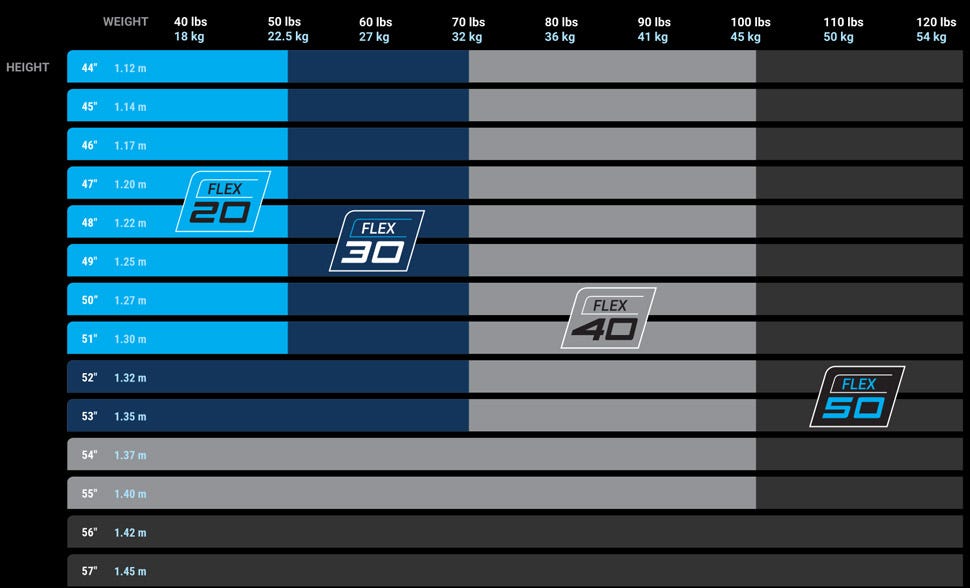
Q: Which blade curve is the best?
There are many different curve options, each with certain advantages. The P92 curve is the most popular and a good option to start with. It helps players excel in puck control, quick shot release, and lifting their shots. The P88 is also a very popular curve. This one will help them with stick handling, wrist shots, and precision passing.
Q: How do I put on hockey gear?
A: Everyone has their own way of doing it, but a good starting point is to start with the bottom first. Put on the jock first, then shins, socks, pants, and skates. From there, move to the upper body. Put on the shoulder pads first, then elbow pads, jersey, helmet, and gloves.
Q: How do you clean hockey equipment?
A: All base layers, jock, jersey, pants, inner liner of shin guards (if removeable), shoulder and elbow pads, and gloves can all be washed in a washing machine. If you choose to do this, make sure that you are using warm water, regular detergent (no bleach), and use the gentle cycle setting. Also, be sure to fasten all Velcro straps to ensure that they don’t get damaged. Following the wash, you can either air dry the equipment or put it in the dryer on the low setting.
Q: How do you store hockey equipment?
A: Hockey Equipment should be stored in a cool, open area whenever possible. You will not want to let it sit in your bag until the next time you need to use it. You can take it out of your bag and lay it out on the ground to air dry or place each piece of gear on an equipment drying rack.
Q: How do you keep hockey equipment from smelling?
A: Wear base layers. Base layers are a form fitting upper body shirt, compression pants, and a pair of socks. By wearing these layers, not only will it help wick away sweat and moisture, but it will also serve as a shield between the body and the equipment so that the body does not have direct contact with it. Removing the skate soles is also recommended. Doing so allows skates to air out and eliminates the opportunity for rust to form. Additionally, before placing the gear to air dry, you can use a few sprays of a gear deodorizer spray on each piece of gear. Deodorizer spray helps neutralize, destroy, and deodorize any odors.
Q: Should I get a hockey equipment drying rack?
A: A drying rack is also a good tool to help prevent any unpleasant odors. This will allow the air to circulate around the equipment, helping it dry faster. Before hanging equipment on the drying rack, spray each piece with a few sprays of gear deodorizer, or white vinegar, as this will also help to eliminate odors. Your child’s equipment can be stored here until their next skate! Additionally, drying racks also help save space thanks to their compact and organized design, rather than leaving your hockey equipment sprawled across the floor.






